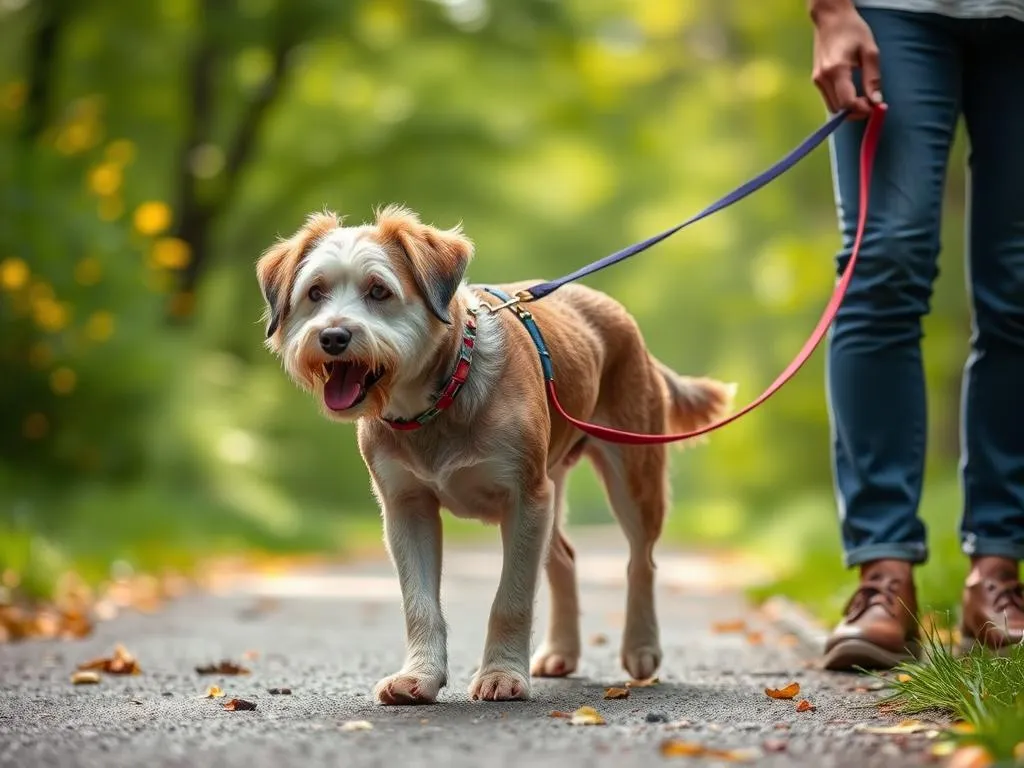
Introduction
Leash training is essential for dogs of all ages, but it takes on a unique importance when it comes to how to train your older dog to walk on a leash. Older dogs may have developed certain behaviors over the years, making the task seem daunting. However, with the right approach, patience, and understanding, you can create a positive walking experience for both you and your furry friend.
Training an older dog involves recognizing the common challenges that may arise due to their age, health, and past experiences. The benefits of leash training are significant; it not only ensures safety during walks but also improves your dog’s behavior and strengthens your bond. This article will guide you through various aspects of training your older dog to walk on a leash, from understanding their specific needs to troubleshooting potential issues.
Understanding Your Older Dog
Age Considerations
As dogs age, their physical and mental capabilities change. Older dogs may experience decreased stamina, joint stiffness, or even cognitive decline. It’s essential to consider these factors when training. Common health issues, such as arthritis or vision problems, can significantly impact your dog’s ability to walk comfortably on a leash. Understanding your dog’s limitations will help you tailor your training approach effectively.
Behavioral Aspects
Older dogs often exhibit unique behavioral traits influenced by their life experiences. They may be set in their ways or have developed specific fears or anxieties that affect their leash behavior. For instance, a dog that has never been leashed may resist the experience, while one with a history of negative encounters may exhibit fear or aggression. Recognizing and addressing these behaviors will create a more effective training environment.
Preparing for Training
Essential Gear
The right equipment can make all the difference when learning how to train your older dog to walk on a leash. Here are some recommendations:
- Leashes: Use a sturdy, lightweight leash that is about 4 to 6 feet long. Avoid retractable leashes, as they can be difficult to control.
- Collars and Harnesses: Opt for a comfortable collar or a front-clip harness that distributes pressure evenly. A well-fitted harness can prevent strain on your dog’s neck and back.
Creating a Comfortable Environment
Choosing the right location is critical for successful training. Start in a quiet area with minimal distractions, such as your backyard or a calm park. The atmosphere should be calm and relaxed, enabling your dog to focus on your commands without feeling overwhelmed.
Step-by-Step Training Process
Basic Commands Review
Before diving into leash training, it’s beneficial to review basic commands like sit, stay, and come. These commands will support your leash training efforts. Use positive reinforcement techniques, such as treats or praise, to encourage your dog to follow these commands consistently.
Introducing the Leash
Start by allowing your dog to become familiar with the collar or harness and leash. Let them sniff and inspect the equipment before putting it on. Gradually introduce the leash by attaching it for short periods while offering treats and praise. This process will help make the leash a positive experience.
Short Training Sessions
When training your older dog, keep initial sessions brief and enjoyable. Aim for 5 to 10 minutes at a time, depending on your dog’s stamina. Gradually increase the duration as your dog becomes more comfortable. The key is to ensure that each session ends on a positive note, fostering a sense of accomplishment.
Practicing Walking
Starting Indoors
Begin practicing walking indoors, where distractions are minimal. Encourage your dog to walk beside you using treats as motivation. Use a slow, steady pace, and reward your dog for staying close to your side. This environment will help them learn the basics without overwhelming them.
Transitioning Outdoors
Once your dog is comfortable walking indoors, it’s time to transition outside. Choose a quiet time of day, such as early morning or late afternoon, to avoid busy crowds. Continue using treats to encourage good behavior and reinforce the idea that walking is a fun activity.
Addressing Pulling and Distractions
Pulling can be a common issue among older dogs. If your dog begins to pull, stop walking and wait for them to return to your side. This technique teaches them that pulling will not get them where they want to go. Additionally, practicing focus exercises, such as asking your dog to make eye contact, can help redirect their attention away from distractions.
Building Positive Associations
Reward-Based Training
Using positive reinforcement is crucial when learning how to train your older dog to walk on a leash. Reward your dog with treats, praise, or even their favorite toy when they exhibit good behavior during walks. This reinforcement will encourage them to repeat those behaviors in the future.
Incorporating Play
To keep your dog engaged, consider incorporating playtime before and after your walks. This not only helps expend excess energy but also makes the entire experience more enjoyable for your dog. A happy, well-exercised dog is often more receptive to training.
Troubleshooting Common Issues
Fear and Anxiety
If your older dog shows signs of fear or anxiety during walks, it’s crucial to identify these signals early. Common signs include trembling, cowering, or trying to hide. To build confidence, start with short walks in familiar settings and gradually introduce new environments. Use calming techniques, like soothing voice commands and gentle petting, to reassure your dog.
Reactivity to Other Dogs or People
Many older dogs can be reactive to other dogs or people. To manage this behavior, maintain a safe distance from potential triggers and practice desensitization techniques. Gradually expose your dog to these stimuli while rewarding calm behavior. This process can help your dog become more comfortable and reduce reactivity over time.
Health-Related Challenges
If your dog exhibits physical limitations, such as difficulty walking or signs of pain, it’s essential to adjust your training methods accordingly. Pay attention to your dog’s cues and allow them to rest when needed. If you’re concerned about their behavior or health, consult your veterinarian for guidance and support.
Maintaining Consistency
Establishing a Routine
Creating a consistent walking schedule is vital for your dog’s training success. Aim to take walks at the same times each day, which will help your dog anticipate and prepare for these outings. Consistency not only aids in training but also provides structure and stability for your older dog.
Ongoing Training
Continual practice is essential for long-term success. Reinforce leash training regularly, even after your dog seems to have mastered it. Remember that patience is key; every dog learns at their own pace. Gradually introduce new environments and challenges to keep your dog engaged and responsive.
Conclusion
Training your older dog to walk on a leash can be a rewarding experience that enhances both your and your dog’s quality of life. By understanding their unique needs, using positive reinforcement techniques, and maintaining consistency, you can create enjoyable and successful walks. Remember to be patient and persistent, celebrating each small victory along the way.
Feel free to share your personal experiences or tips in the comments section; we’d love to hear how you’re navigating the journey of leash training your older dog!









